Review: Apple iPhone 5c
Sep 25, 2013, 12:52 PM by Eric M. Zeman
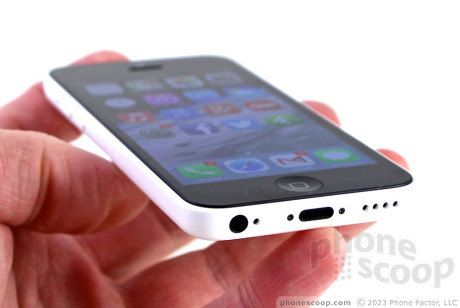
The iPhone 5c is a lower-cost alternative to the iPhone 5s, but don't call it cheap.
Form
Is It Your Type?
For the first time, Apple is offering two distinct new iPhones. The 5c is the lesser of the two new smartphones from Apple, but don't let the plastic exterior fool you. The 5c is nearly as capable a device as the 5s despite the more colorful exterior. The 5c is for people looking for some slightly different thinking on Apple's part.
Body
The original iPhone was made of metal. The iPhone 3G and 3GS were plastic. The iPhone 4, 4S, 5, and 5s are made of glass and metal. The 5c? Back to plastic. Or, if you want to pretend it's special, polycarbonate. For whatever reason, Apple decided to scrap the iPhone 5 and is offering the new 5c as a lower-cost alternative to the iPhone 5s. The biggest difference between the 5s and 5c are their bodies. The 5s is all classy aluminum while the 5c is all whimsical polycarbonate. The differences are more than skin deep, though, and we'll discuss the other trade-offs in time.
The Apple iPhone 5c is an interesting beast. It's offered in five colors: white, blue, green, yellow, and pink. The colors are very bright. There's nothing subtle about them. There's also nothing particularly masculine about them, if you ask me. I generally like blue (my customized Moto X has a royal blue back, for example), but the blue iPhone 5c completely turns me off. So do the other colors. The only option I can stomach is the white one, which sort of negates the entire point of offering colored iPhones. Aside from the colors, I like the iPhone 5c hardware a lot.
Even though it's made of plastic, the 5c doesn't look or feel cheap. This becomes even more obvious when you pick it up. The 5c is roughly the same size/shape as the 5s. Remember, the 5s and 5c share the exact same screen and many of the same internal components. That means they have the same elongated appearance. The 5c is a hair thicker than the 5s, but it has a more comfortable design. To me, the trade-off is worth it. The 5c's gently rounded back edges are far more comfortable against your palm. Though the polycarbonate skin is glossy and somewhat slippery, it is incredibly smooth and strong. The 5c feels more solid than the 5s. The 5c doesn't have a chamfered metallic edge at the corners. Instead, the polycarbonate doesn't quite rise to the same level as the glass, leaving a small lip that creates a similar effect. Thanks to the slim shape, the 5c will glide into any pocket with no problem.
The front of the iPhone 5c is all black, no matter which color you pick. The black glass panel is the same across all five colors, even white. The display itself disappears into the black bezel when turned off. The slit for the earpiece is visible above the display, as is the user-facing camera. The Home button is below the display. The 5c does not have the 5s's fingerprint scanner. The Home button is exactly the same as the one on the iPhone 5: a simple concave plastic circle. It's easy to find and use. The travel and feedback were quite good, better even than on the 5s.
All the other buttons and controls are in the exact same places as the 5s, but have a totally different feel thanks to the plastic construction. On the left edge, you'll find the mute switch and volume buttons. The 5s has circular volume buttons, but the 5c has more rectangular volume buttons. They have a big profile, so finding them is easy. Travel and feedback is quite good, though a bit on the loud side. The mute switch is there, too, and functions perfectly. The screen lock button is on top. It has a great profile and excellent travel and feedback.
The stereo headphone jack and Lightning port are both located on the bottom of the 5c. The Lightning port is Apple's proprietary port for charging, data sync, and media. I like the Lightning port because it's easier to use than most other ports (plugs can be inserted either way), but it's important to note that Apple is about the only company in the world that doesn't use microUSB. This means you can only use Apple-made or Apple-approved cables. There are also drilled holes on the bottom that form the grille for the speaker.
As with all iPhones, the 5c's battery is inaccessible. You can't swap it out or pull it. The same goes for memory. You're stuck with 16 or 32 GB; there's no expansion slot. The nano SIM card port is in the same spot on the right edge of the phone. The nano SIM card is smaller than the micro SIM card that is currently used by most phones. You can't remove the SIM card and use it with other phones unless you have an adapter. Granted, few people ever eject their SIM card, but it's something worth knowing.
If you're inclined to think that the "c" in iPhone 5c stands for "cheap," you're sorely mistaken. Nothing about the iPhone 5c feels cheap. Sure, it's not aluminum, (which has its own appeal,) but it's an extremely solid and easy-to-use piece of hardware.
Performance
Screen
As with the 5s, Apple carried over the same 4-inch, 1136 x 640 pixel screen from last year's iPhone 5, for the 5c. There's absolutely nothing wrong with the LCD panel itself. It is incredibly bright, razor sharp, and shows accurate color. The Retina Display's pixels are packed so tightly that picking out individual pixels is near impossible. The auto-brightness feature works very well when transitioning from bright environments (such as outdoors) to dark environments (indoors). Everything about the screen is exceptional, apart from the size.
Apple has resisted pressure to increase the size of the iPhone's display. According to Apple CEO Tim Cook, the company doesn't want to sacrifice one-handed operation of the phone. That's a valid point. Some phones, such as the Galaxy Note line from Samsung, have screens that are so large the device becomes awkward to operate. Most of today's leading Android devices have 5-inch screens and full 1080p resolution. However, not only is the iPhone's screen among the smallest of most modern smartphones, it also has the fewest pixels. For example, the iPhone has about 727,000 pixels, while a 720p HD screen (such as on the Moto X) has about 922,000 and a 1080p HD screen (such as the Galaxy S4) has 2.1 million pixels.
The size of the iPhone 5c display won't appeal to everyone, despite how good the quality actually is.
Signal
We tested an unlocked version of the iPhone 5c on AT&T's network around the metro NYC area. The iPhone 5c performed on par with other AT&T devices tested in this region of the country. The iPhone remained connected to AT&T's network throughout our review period. It always showed an HSPA+ or LTE connection, depending on what was available. It never dropped to EDGE, even in areas that have poor AT&T coverage. More to the point, the iPhone connected every call I dialed on the first attempt and it never dropped or missed any calls. Further, data speeds were solid across the board, and appreciably quick in areas with good LTE coverage. In short, it performed identically to the iPhone 5s on AT&T's network, as well it should.
Sound
The 5c is also on par with the 5s when it comes to call quality. The earpiece produces sharp tones and I noticed plenty of interference during calls. Volume of calls was acceptable, but far from great. I was able to hear calls easily in my own home with the volume set to about 50%. I had to raise it up all the way to hear calls in moderately noisy spaces, such as city streets or coffee shops. Crowded restaurants and screaming kids drowned the 5c out entirely. As with the 5s, the 5c's speakerphone produces excellent volume. In fact, it is quite loud when set all the way up, and can be used in cars, in offices, and in your home when you're in the same room with the phone. Quality over the speakerphone isn't that great, though. The interference issues are amplified in a decidedly unpleasant way. Ringer volume is heavily dependent on which ringtone you choose. For example, the "Classic Phone" is loud enough to make your ears bleed. But some of the new ringtones in iOS 7 - while really lovely - are much harder to hear in even moderately quiet environments. The vibrate alert is strong enough to get your attention when the phone is in your pocket.
Battery
Apple doesn't specify the exact capacity of either of the iPhones' batteries, but it does say the 5s and 5c offer the same battery life. Based on my experience, this is true. After testing the 5c for several days, I can confidently report that it will get most people through most of a day with moderate use. That means the 5c will run from 7AM until about 7 or 9PM without much trouble. If you don't use it much, it might still have some juice left at bedtime. If you use it a lot, you can expect to be in trouble as soon as 5 or 6PM. I tested the 5c in areas with a mix of HSPA+ and LTE, and had the screen brightness set to 50% throughout my testing. I left both the Wi-Fi and Bluetooth radios on, as well as GPS, and used the device heavily to check email, Facebook, RSS, and Twitter throughout the day. I also played some games, watched some video content, and listened to music. As with all iPhones, you're going to need to learn to manage its power useage. Apple doesn't offer any special battery-life-management features, so you're on your own to figure it out.
Basics
Editor's Note: Because both the iPhone 5s and 5c run an identical operating system, iOS 7, much of the following text was pulled from Phone Scoop's review of the 5s. Please rest assured, however. We tested both the 5s and 5c thoroughly, and spell out all the differences between the two throughout this review.
Menus
The iPhone 5c runs iOS 7. For a full run down of all the new features in iOS 7, see Phone Scoop's separate review of iOS 7here. If you're looking for the quick and dirty version, read on.
iOS 7 is a complete redesign of Apple's tried-and-true operating system. It looks entirely different and adds tons of features. There's a nice, big, digital clock that's visible on the lock screen. In addition to the clock, you can access both the notification shade and new Control Center from the lock screen. The notification center has been dramatically improved. It offers a nice "Today" screen complete with your appointments, weather, and stocks. It also shows you missed calls, emails, messages, and so on. The Control Center is a new feature that you access by swiping up from the bottom of the screen (you can disable it in the lock screen if you want.) It provides quick access to hardware functions, such as the wireless radios, screen brightness, volume, and several apps (flashlight, calculator, timer, camera.) The lock screen can be used with or without a pass code.
The home screens have a new look, but they're one area of iOS that has remain virtually unchanged as far as behavior goes. You're stuck with a rigid grid of app icons that populate the screens. You can place up to 20 apps, shortcuts, or folders onto a single home screen. The folders can hold an innumerable number of applications, but you can't see them all at once inside the folder. iOS doesn't offer dynamic or resizable content on the home screen like Android and Windows Phone do.
The settings menu has a different look thanks to the new design, but it behaves about the same as before. The settings have been rearranged together in clumps of controls, such as all the radios in one spot, all the account tools in another, and so on. There's a lot in the settings menu, but it is all very easy to understand and control.
As far as customization goes, users can adjust wallpapers, ringtones, and alerts. iOS 7 includes a wide array of new wallpapers and sounds (thanks goodness!). Text size is easily changed. Apps can be placed in any order that you like on home screens, including in the permanent dock at the bottom that spans all home screens.
Multitasking has been changed, too. Rather than a list of open apps appearing in the dock, open apps now float in the middle of the screen with previews that show the app. The user interface is nice and lets you flick apps off the screen to close them. It doesn't let you see as many open apps at a time, though, which means you have to scroll sideways a bit more to see what's running.
Performance of iOS 7 on the iPhone 5c was much smoother than the 5s. The 5c had no app crashes and fewer jitters in the user interface and screen transitions than the 5s. In fact, it ran without any real problems. iOS 7 is a fast platform and it rarely felt bogged down even though the 5c's A6 processor is older and slower than the A7 processor in the 5s. The 5c's processor was able to process audio files in GarageBand with no trouble, and editing in iPhoto was a breeze. In practical terms, there was no real difference in the performance between the two phones, other than some bugginess on the 5s's part, at least none that I could detect.
Calls and Contacts
Apple changed the look and feel of its phone and contact applications, but the changes are only skin deep. One of the more disappointing aspects to iOS 7 is how skimpy the phone and contact apps are. Sure, the phone works fine for dialing numbers and storing favorites, but it doesn't offer advanced features. The phone app offers a basic set of tools, including speakerphone, contact search, add a line, and send to Bluetooth.
The contact application is breeze to set up and use, but it is really lacking in social skills. It may port over social networking profile images (why are they so tiny?!) and contact data, but it doesn't offer status updates or views of your contacts' recent photos. You can reach out to people easily, and syncing data to the contact app is a cinch, but I wish it were more visually and socially immersive. Both Android and Windows Phone excel with their contact apps. There are also no active widgets/tiles for the iOS home screen.
Both the phone and contact apps work fine at handling the basics, and FaceTime continues to be the most user-friendly video chatting application out there.
Messages
The messaging apps are another area to which Apple paid little attention during the iOS 7 redesign.
The SMS application has been warmed over with the new design language, but it doesn't many any significant leaps in usability or features. It offers the same threaded conversations that appear in bubbles. The one thing you can do now is to easily check when each message arrived/was sent with a new swiping gesture. Of course, you can set up iMessage so that texts are sent either over your data network (when available) or as SMS as a back-up. iMessage can also be used on iPads, iPods, and Mac computers. For those fully invested in Apple's hardware ecosystem, it can be really helpful to have your messages accessible from other devices. Turning iMessage off, however, can be problematic and lead to lost messages. It's one of those features that you either need to jump into with both feet, or leave alone entirely.
The email application also gains new swiping gestures to help with accessing menus and features, but the overall behavior is hardly changed compared to the previous version. It's still just as cumbersome to add attachments, and doesn't have as many features as Gmail does on Android devices. That said, it syncs with POP3, IMAP4, and Exchange, and is as flexible as ever as far as delivering messages is concerned.
Both Facebook and Twitter have been baked into the operating system to a small degree. This means you can share content from the photo gallery directly to Facebook or Twitter, but beyond that the sharing options in iOS aren't as varied as on Android devices. You still need to download and install the dedicated Facebook and Twitter apps to really use them. Google+ and other social networks can only be reached through third-party applications.
Extras
Media
The iTunes Store has been completely redesigned in iOS 7, and it's one of the apps that truly benefits from the new look. Browsing through the store is pleasant, as is searching, and iTunes offers more content than just about every other platform out there. iTunes remains the most powerful and attractive on-device content store available on a smartphone.
Additionally, the music player has been revamped so that it looks and behaves more like the iTunes Store. The two apps complement one another well. The music player also adds iTunes Radio, a free streaming service that lets you listen to curated radio stations or build your own. iTunes Radio draws from Apple's extensive online library and I found the selection of tunes to be quite good. Quality of the music files streamed over the network isn't as good as locally-stored music, nor is it as good as what Pandora offers, at least to my well-practiced ears.
The video player was glossed over by Apple in iOS 7, but it doesn't behave any differently than before.
There are no third-party content apps preinstalled on the iPhone 5c.
Camera
The camera is another app that's been completely redesigned. It makes some modest usability improvements and adds new features at the same time.
For starters, there is no dedicated camera button, so the camera must be launched from the lock screen shortcut, the Control Center, or the app icon. It launches very quickly on the 5c. There's a basic viewfinder that lets you compose your image. There are tools placed along the left edge that allow you to switch to the user-facing camera, turn HDR on/off, and adjust the flash. The tools on the right edge include the shutter button, photo gallery shortcut, and filters, which can be applied before you take the shot.
The camera can shoot in several different modes, including square (think Instagram), regular (4:3 ratio), burst (press-and-hold shutter button to take continuous shots), panorama, and video. The 5c loses the 5s's ability to shoot slow-motion video. The camera defaults to the regular mode when first opened, and the default cannot be changed. In order to access the other modes, you swipe the entire camera interface left or right. It makes sense, but it takes two swipes to get to the panorama tool. Aside from the clunky double-swiping gestures, everything else about the camera app is very, very fast.
The camera does not offer some of the advanced functions that are on smartphones such as the Nokia Lumia 1020 or the LG G2, but that's the way Apple wants it. It puts simplicity over complexity, and manages the behind-the-scenes controls quite well on its own. It's one of the easiest smartphone cameras to use.
The burst mode often works on accident. If you quickly press the on-screen shutter button, the 5c takes one shot. It you press-and-hold, it will take a handful of shots before you have a chance to blink. The same thing happens if you press the volume button. The HDR mode is simpler than ever to use because there's a simple toggle that's available in the viewfinder. You no longer have to access drop-down menu to turn it on or off.
Photos
The iPhone 5c has an 8-megapixel sensor that differs a bit from that of the 5s. It has the same 5-element lens, but the pixels on the 5c's sensor are a bit smaller and it has a higher f-stop (f/2.4 versus the 5s's f/2.2). That doesn't mean the 5c's camera in radically inferior. It's a blend of the camera technology on the 5 and 5s, both good cameras.
If you look at the sample images below, you'll see sharp focus in most cases, bright colors, and accurate exposure. The 5c does a really good job of processing images without any additional input from the user, who is free to just shoot pictures with the assurance that they'll probably turn out well. I was particularly impressed with the blue sky and flowers in the samples below.
The 5c and 5s do share the exact same front camera. According to Apple, the front camera is at rated 1.3 megapixels and able to shoot 720p HD video. It's not as good as the rear-camera, that's for sure. The images have far more grain, though they suffice for FaceTime chats. You can use the front camera for selfies, but the quality doesn't come close to those taken with the rear camera. I can't spot any noticeable improvement when compared to the iPhone 5.
The burst shot mode is best use when shooting an action scene where exact timing is difficult to achieve on your own. In that regard, the 5c does well. It is, however, a bit slower at firing off shots than the 5s is. The 5s can capture more pictures in a shorter amount of time. The panorama tool works just the same as that on the iPhone 5, and the results are really good. The iPhone's camera produces some of the best panoramas out there.
Just as with the iPhone 5s, the camera on the 5c easily matches that of the Galaxy S4 and HTC One, and bests the LG G2. The Lumia 1020 is a different animal thanks to its PureView technology, but the 5c holds its own against Nokia's imaging beast.
Video
The 5c records 1080p HD video at 30 frames per second when shooting in normal mode. The results looked great. I was particularly impressed with the accuracy of the focus, white balance, and exposure. The HD results looked excellent on my large monitor and HDTV. The iPhone doesn't do quite as well is low-light situations, but you can turn on the video light to help if necessary.
Gallery
The gallery application is much, much better in iOS 7 than it was in iOS 6. The gallery app now organizes pictures into Years, Collections, and Moments based on time and location together. Years are what they are, Collections are larger events in a general location (Your State), and Moments are more specific events in a more specific location (Your Town). The way they are presented visually in the gallery app is really nice, and it makes sense when you drill down into each segment. Alternately, photos are also arranged into albums, and photo streams. Albums can be created and edited on the iPhone 5c, but the process is still fairly awkward.
As far as editing and sharing are concerned, the 5c does OK. Sharing is simple from the gallery to Facebook, Twitter, and email/MMS. Anything beyond that requires a third-party app. Editing features are limited to crop, rotate, red-eye reduction and applying filters for various effects. If you want hardcore editing functions (including white balance and exposure control,) you'll have to switch over to Apple's iPhoto app, which is a separate download.
AirDrop
This is Apple's proprietary sharing function. You have to turn it on, and it requires both Wi-Fi and Bluetooth to function. It's a bit like Android Beam in that it lets you send files (pictures, documents, contact details, etc.) to another iOS device. Content that can be shared via AirDrop lets you know when you press the universal "share" button. If you select AirDrop, you'll see all the other AIrDrop devices that are nearby and it is simply a matter of picking one device and sending the file over. There's no pairing, no connecting, it just sends. The person on the receiving end will get a pop-up notice alerting them to the incoming file. They simply accept and voila, the file transfers over.
Browser
Safari in iOS 7 is the best version yet, hands down. It received the same visual overhaul that the rest of the operating system got, as well as a handful of new tools.
There's less navigational junk in the way of web pages, which can now fill the entire screen. The address bar is smarter than before. For example, it can handle searches. Previously, you had to use a separate search field in the browser to perform a search, now it can be done directly from the address bar. The back/forward, share, and tab tools are all located at the bottom of the screen. There are a bit minimalistic, but they work well. I particularly like the tab function, which shows open web pages in a 3D vertical carousel complete with previews.
In terms of speed, Safari is faster than ever. The browser combined with LTE means web pages load incredibly fast.
Bluetooth
The iPhone 5c has Bluetooth 4.0 low energy on board. I had no problem pairing it with a number of different devices, including other iOS devices, Macs, and headphones. Speaking of which, phone calls passed to both headsets and my car's hands-free system were OK, but not great. The volume was acceptable, but quality was a bit low in my opinion. Music sent to stereo Bluetooth headphones, on the other hand, sounded amazing.
Clock
A large digital clock appears on the iOS 7 lock screen when you press either the home button or lock screen button. It is white and cannot be customized. I wish the font were thicker, as it slims down a bit compared to the clock from iOS 6. As always, you have to choose your wallpaper carefully. The clock is almost impossible to see on top of light-colored wallpapers.
GPS
The iPhone 5c ships with an improved version of Apple Maps. Apple Maps is better than last year's disastrous debut, no doubt, but it still isn't as good as Google Maps or Nokia HERE Maps. Apple Maps is fine for plotting directions between two points, and getting you there with voice-guided assistance. Its biggest weakness is handling real-time data. For example, it's not so good at displaying live traffic problem areas, nor is it good at anticipating problems and avoiding them. That said, it is still a neat bit of software, and the 3D flyovers are as cool as ever. The GPS radio in the 5c functions perfectly. It located me within 5 seconds and to within 10 feet consistently. That's as fast and accurate as it gets.
Siri
Siri in iOS 7 has been vastly improved, and the performance on the iPhone 5c was just as good as the iPhone 5, but slightly slower than the 5s. Siri has a slightly different user interface than before, and the voice has been changed to make it sound a bit more realistic. Siri's odd personality remains intact, and it is able to handle more tasks. You can ask Siri to play music, send messages, read emails, find directions, search the web and so on. Siri isn't quite as quick as Google Now on Android devices, but it's very close.
Wrap-Up
The Apple iPhone 5c is a solid performer, but it presents a bit of a conundrum to consumers.
The major differences between the 5s and the 5c are the shell, processor, camera, and fingerprint sensor. Apple priced the 5s at $100 more than the 5c thanks to its aluminum skin, faster chip, slightly better camera, and Touch ID feature. Plenty of features are the same, however, including the screen, app compatibility, radio performance, and battery life.
The 5c's polycarbonate design allows Apple to offer it in five different colors. Whether or not those colors are appealing to you is a personal preference. The 5c feels more comfortable to hold and use than the 5s, but it is slightly larger and heavier.
I wish the 5c offered slightly better call quality and battery life, but the wireless data performance is excellent. The camera does a great job at capturing accurate images that match the competition, but it loses the cool slow-motion feature of the 5s. The fully revised operating system is a breath of fresh air, but not confined to the iPhone 5c (it's also available to the iPhone 5, 4S, and 4.)
Would I recommend the Apple iPhone 5c? Anyone with an iPhone 4 or 4S should upgrade right away. If you're using an iPhone 5, there's no reason to run to the Apple store since many of the features are identical. The bigger question is, iPhone 5s or 5c? For my money, the extra $100 is worth the upgrade to the 5s. If you're on a tight budget, however, the 5c is a worthy device that delights.


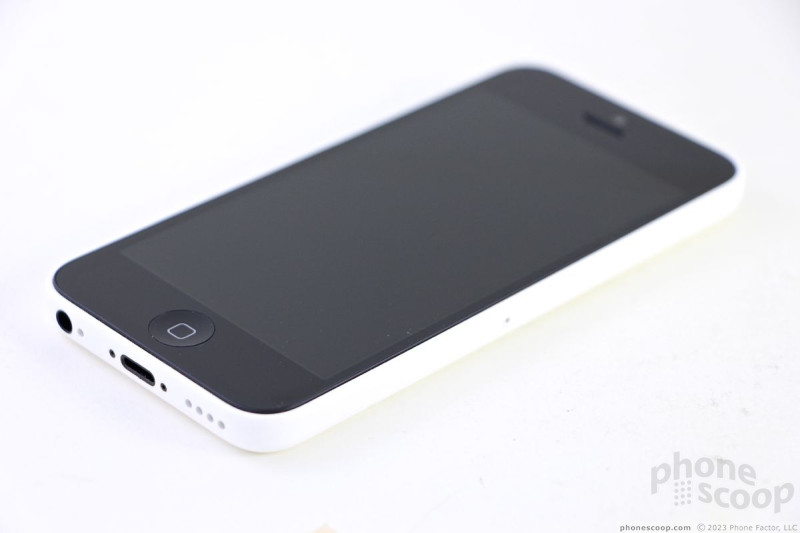




















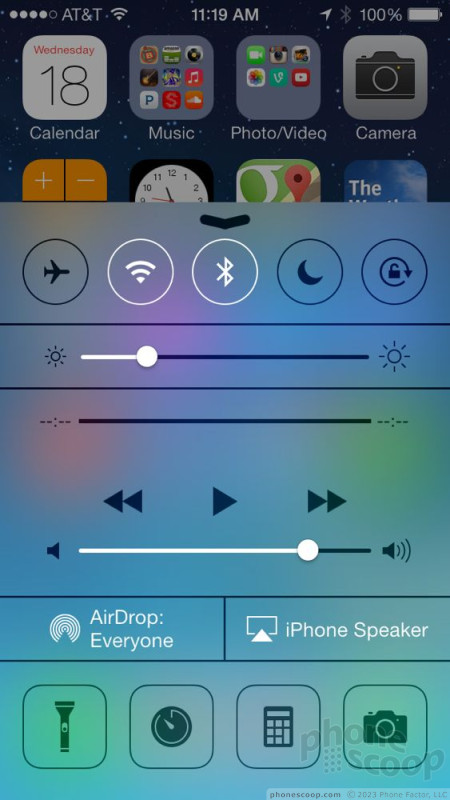



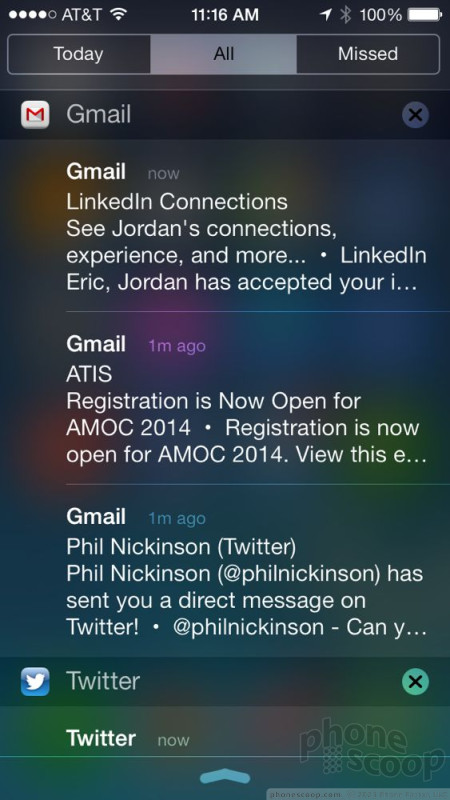



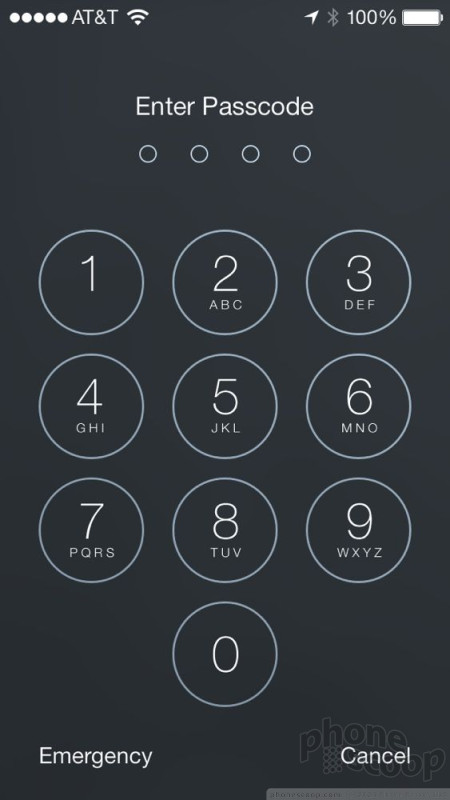






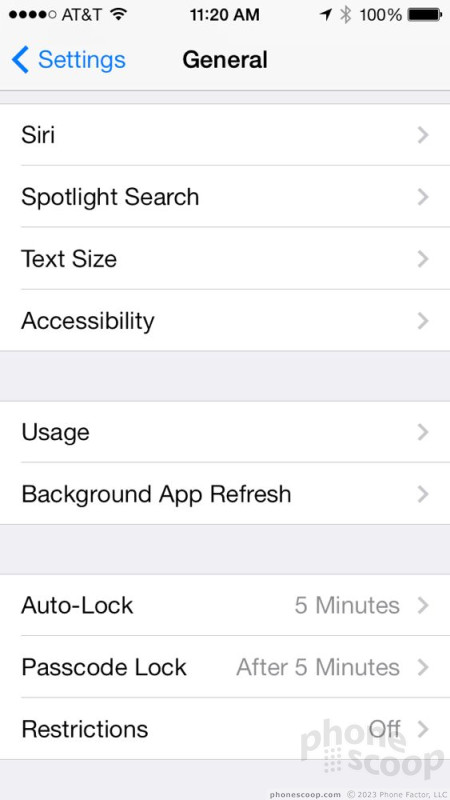





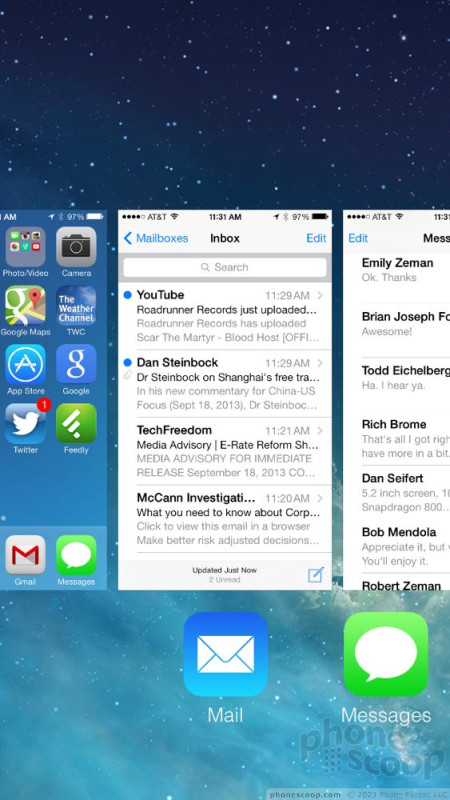



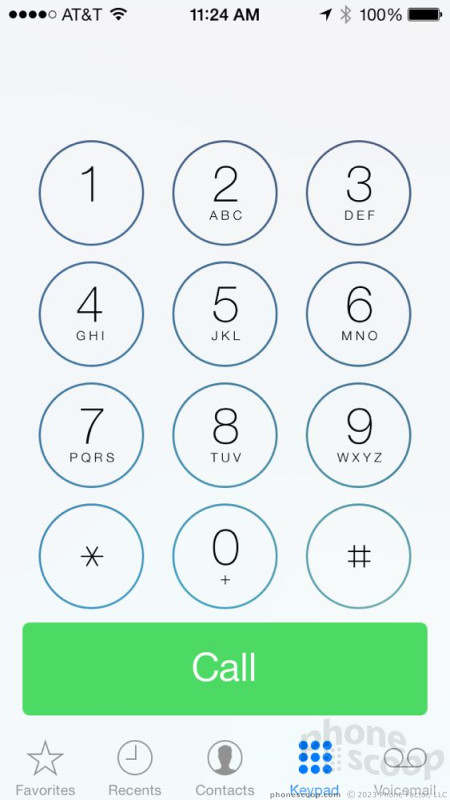





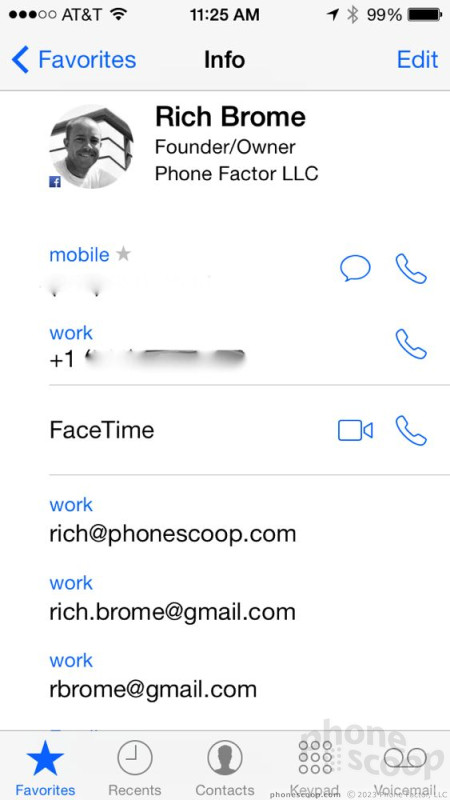






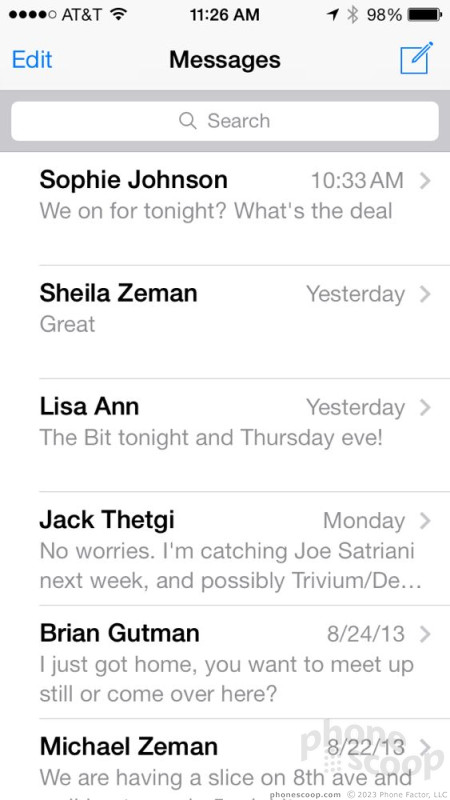








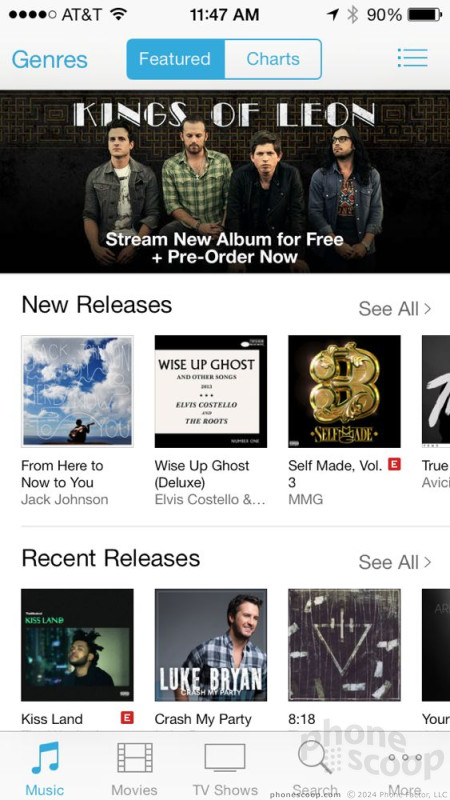




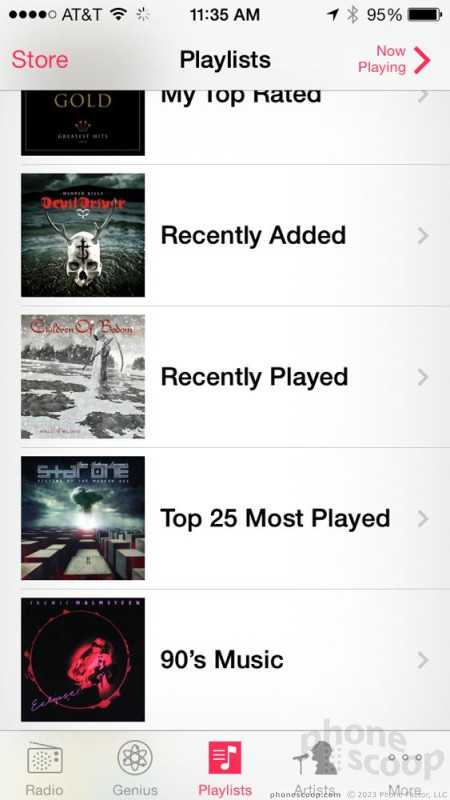










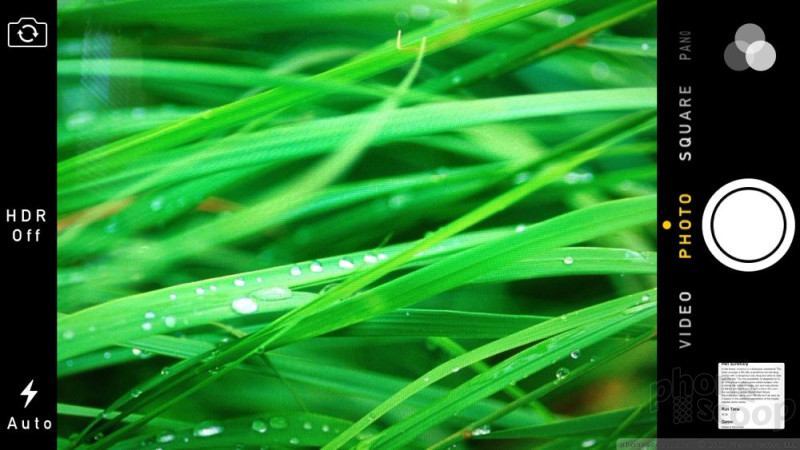




















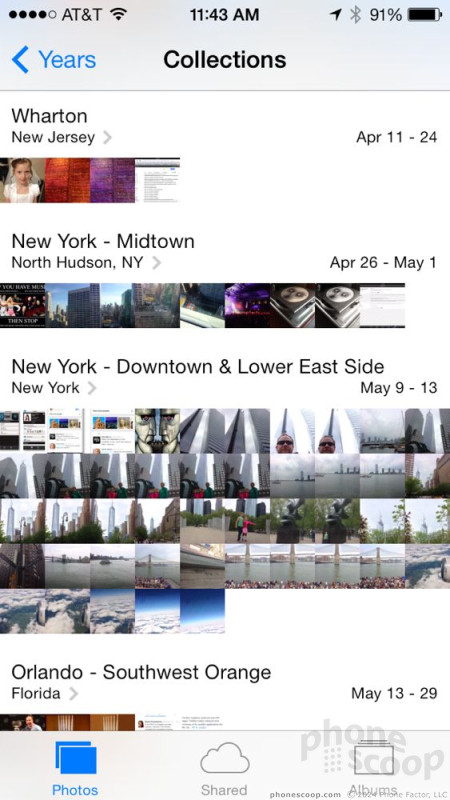






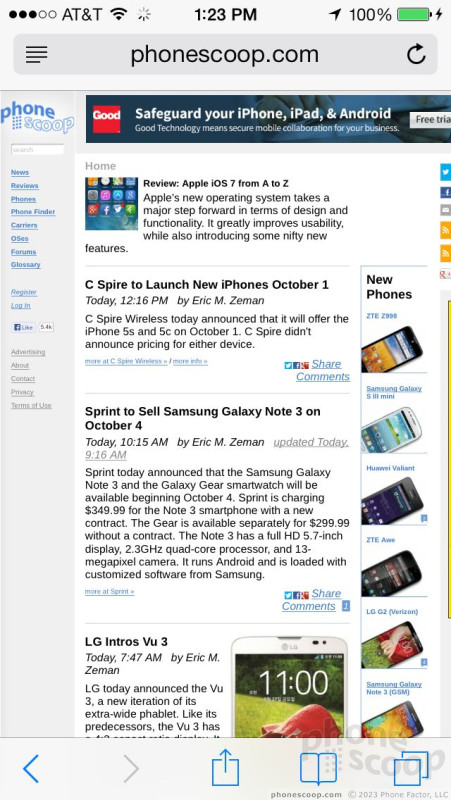






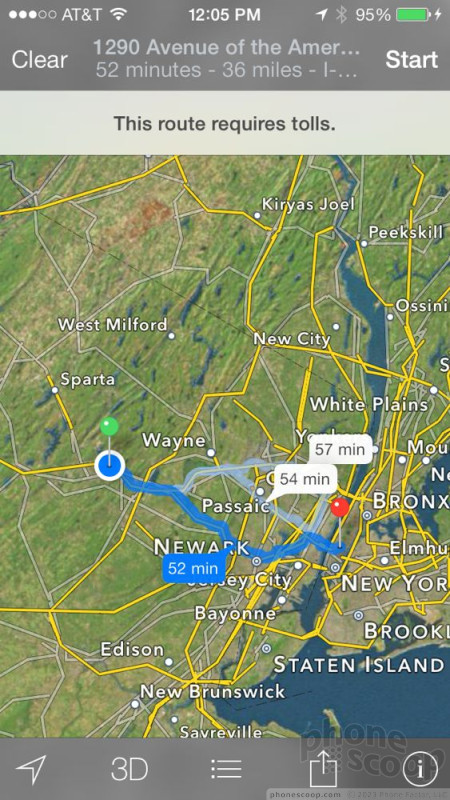




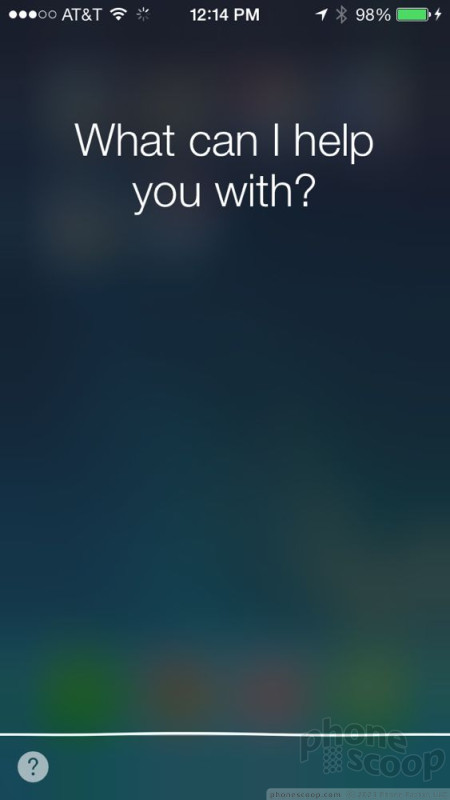




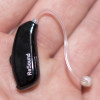 ReSound Smart Hearing Aid Connects To Your Phone
ReSound Smart Hearing Aid Connects To Your Phone
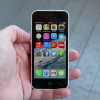 Hands-On: Apple iPhone 5c
Hands-On: Apple iPhone 5c
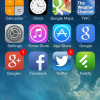 Review: Apple iOS 7 from A to Z
Review: Apple iOS 7 from A to Z
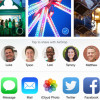 Apple Makes iOS8 Available to the Masses
Apple Makes iOS8 Available to the Masses
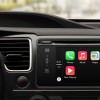 CarPlay Lets Drivers Access Their iPhone Via Siri
CarPlay Lets Drivers Access Their iPhone Via Siri
 Apple iPhone 5c
Apple iPhone 5c



